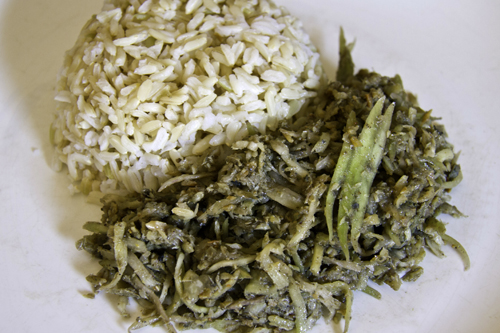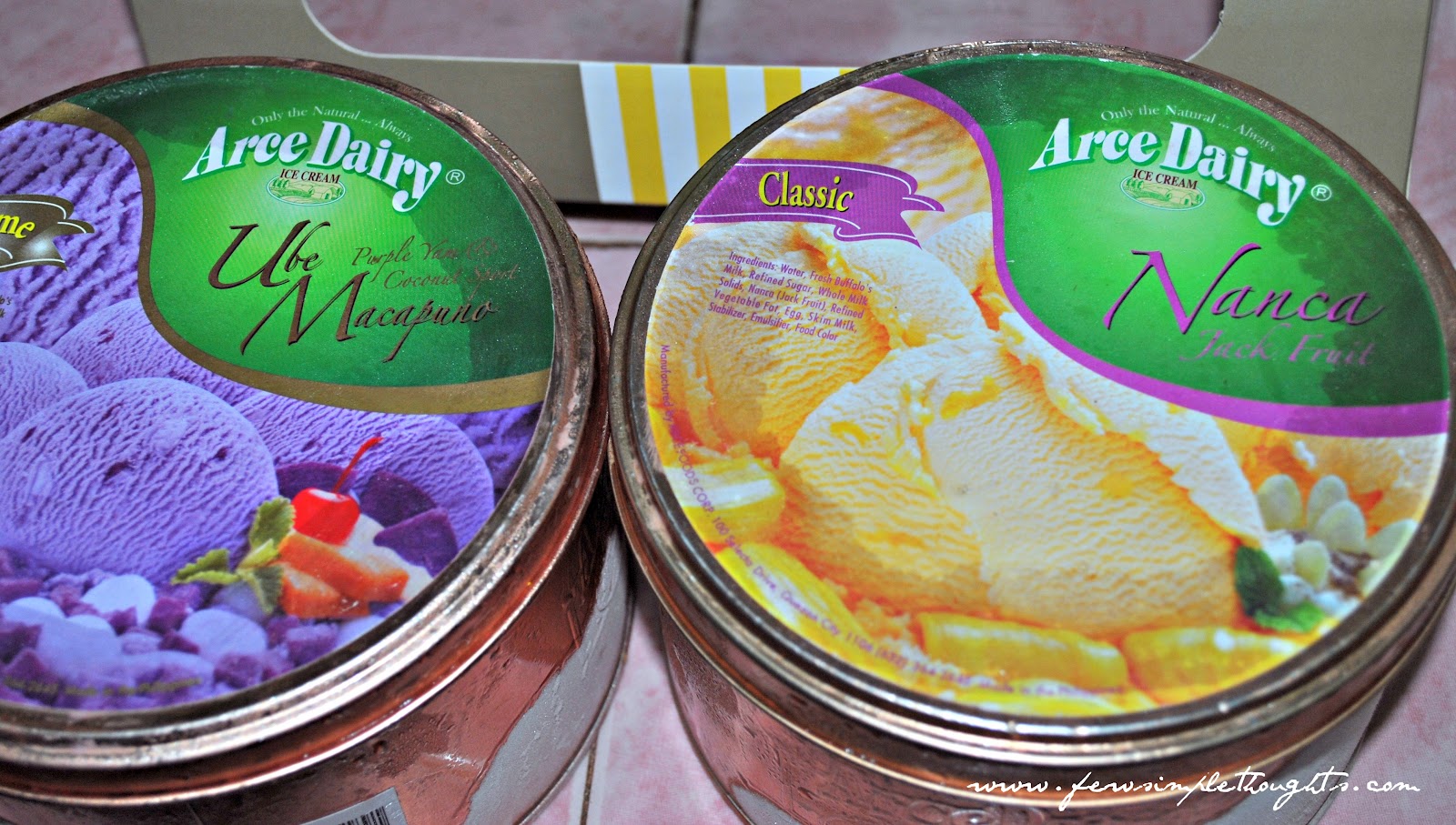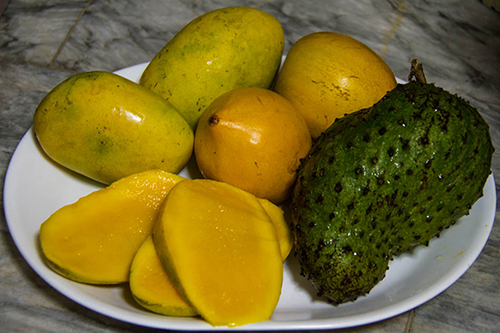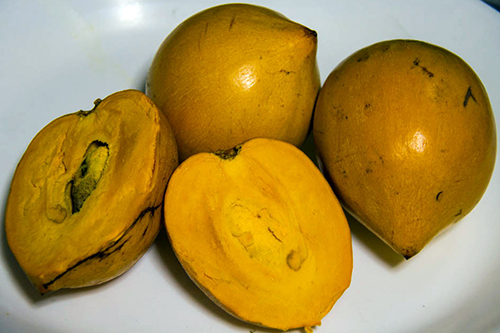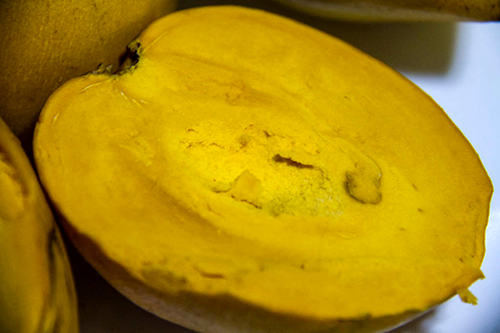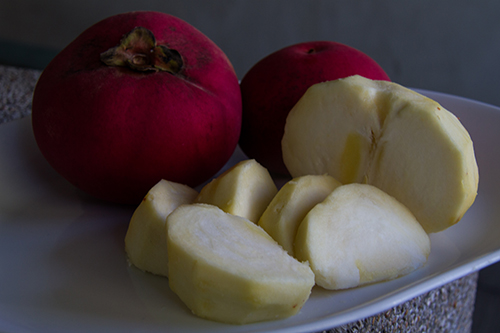(Smashed grilled fish) I’m always discovering new Khmer dishes I haven’t tried yet. My colleague brought some of this the other day for her lunch. The photo doesn’t capture it well, but it’s a very tasty dish (for those not turned off by pungency, that is)!
It’s made of fish (grilled river catfish was used here), smashed in a mortar and pestle with grated green mango and spices. I asked Sopheap to make it and watched. Into the mortar with the mango went chopped red and white onion, a little garlic, salt, peanuts, some fish sauce and herbs that they call chee (gee?), for which I don’t know the English names. (I’ll add to this post when I find out.)
Similar to it is the more famous green papaya/mango salad. This salad has river crab, often added raw then smashed into the other ingredients. But svay bok trai cha-aa uses fish. They lend a lot of pungency to the already multiple layers of flavor. It won’t go into the family’s recipe rotation very often, because the flavors are a bit strong for the kids right now. But it’s definitely a good lunch option! (I just have to make sure to stock Menthos in my desk!)
